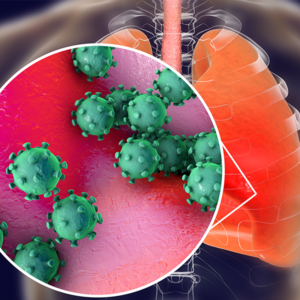Interventional Care


We notice that you are visiting us from . This site only services US-based visitors. Would you like to visit the site that is appropriate for your location?

Coronaviruses are once again in the spotlight after a novel strain (2019-nCoV) emerged from Wuhan, China this past December, 2019. Even though human coronaviruses routinely circulate among the population, a novel strain means that no one person has ever previously been exposed to the virus. Thus, even though most of us have had some form of a human coronavirus in our lifetime, we would unlikely have any immunity to this novel strain. Due to this circumstance, there is a substantial concern for a pandemic, or spread of this illness, across the entire globe.
On January 30, 2020, the World Health Organization (WHO) declared the outbreak of the novel coronavirus (2019-nCoV) to be a Public Health Emergency of International Concern (PHEIC). Under the WHO’s International Health Regulations (IHR) of 2005, a PHEIC is declared when “an extraordinary event which is determined” that is an international public health risk requiring a coordinated international response. WHO also states it “implies a situation that: is serious, unusual or unexpected”. Travel or trade restrictions can also be imposed if needed. [1] [2]
To put this into perspective, there have been four other PHEICs since 2005 including: H1N1 influenza (2009), polio (2014), Ebola (2014), and Zika virus (2016). ²
Now that this novel coronavirus (2019-nCoV) has entered into a stage of public health emergency, what is important for all people and those in healthcare to know?
Let’s start with the general, “need to know”, for everyone—
Human coronaviruses basics:
Symptoms and transmission:
Prevention, treatment, and infection control measures:
What other additional information is important for those in healthcare? The Centers for Disease Control and Prevention (CDC) has extensive interim guidance for healthcare professionals that can be accessed here: https://www.cdc.gov/coronavirus/2019-nCoV/hcp/index.html. Due to the rapidly evolving nature of this situation, this information is consistently updated, and therefore it would be advisable to routinely review this guidance.
Finally, it is very true that we are in the midst of our influenza season. Currently, in the US, the risk of influenza is much more likely than the novel coronavirus (2019-nCoV). However, it is important to understand that even if there is a lower mortality rate with this new coronavirus (2019-nCoV), there is still a massive potential global impact due to its novelty. Countries with less developed public health infrastructure will undoubtedly be disproportionately affected. So the global effects of a potential pandemic with this novel coronavirus (2019-nCoV), can still be very devastating. If we recall the Spanish flu pandemic of 1918, there were about 500 million people infected worldwide. And, there were an associated 50 million deaths, corresponding to about a 2.5% case-fatality rate.[1] Therefore, even if the current case-fatality rate for the novel coronavirus (2019-nCoV) continue to remain lower (~2%), there is still a huge propensity for a significant global impact. This means that it is of utmost importance that we remain vigilant and prepared, especially with infection prevention and control practices.
Learn more about how PDI is tracking the Novel Coronaviru (2019-nCoV)
[1] World Health Organization. IHR Procedures concerning public health emergencies of international concern (PHEIC). Available at: https://www.who.int/ihr/procedures/pheic/en/
[2] Centers for Disease Control & Prevention. International Health Regulations (IHR). Available at: https://www.cdc.gov/globalhealth/healthprotection/ghs/ihr/index.html
[3] Centers for Disease Control & Prevention. Human Coronavirus Types. Available at: https://www.cdc.gov/coronavirus/types.html
[4] Centers for Disease Control and Prevention. Symptoms and Diagnosis. Available at: https://www.cdc.gov/coronavirus/about/symptoms.html
[5] Centers for Disease Control and Prevention. Transmission. Available at: https://www.cdc.gov/coronavirus/about/transmission.html
[6] Centers for Disease Control & Prevention. Novel Coronavirus (2019-nCoV) and You. Available at: https://www.cdc.gov/coronavirus/2019-ncov/downloads/2019-ncov-factsheet.pdf
[7] Taubenberger, J. K., & Morens, D. M. 1918 Influenza: the Mother of All Pandemics-Volume 12, Number 1—January 2006-Emerging Infectious Diseases journal-CDC.